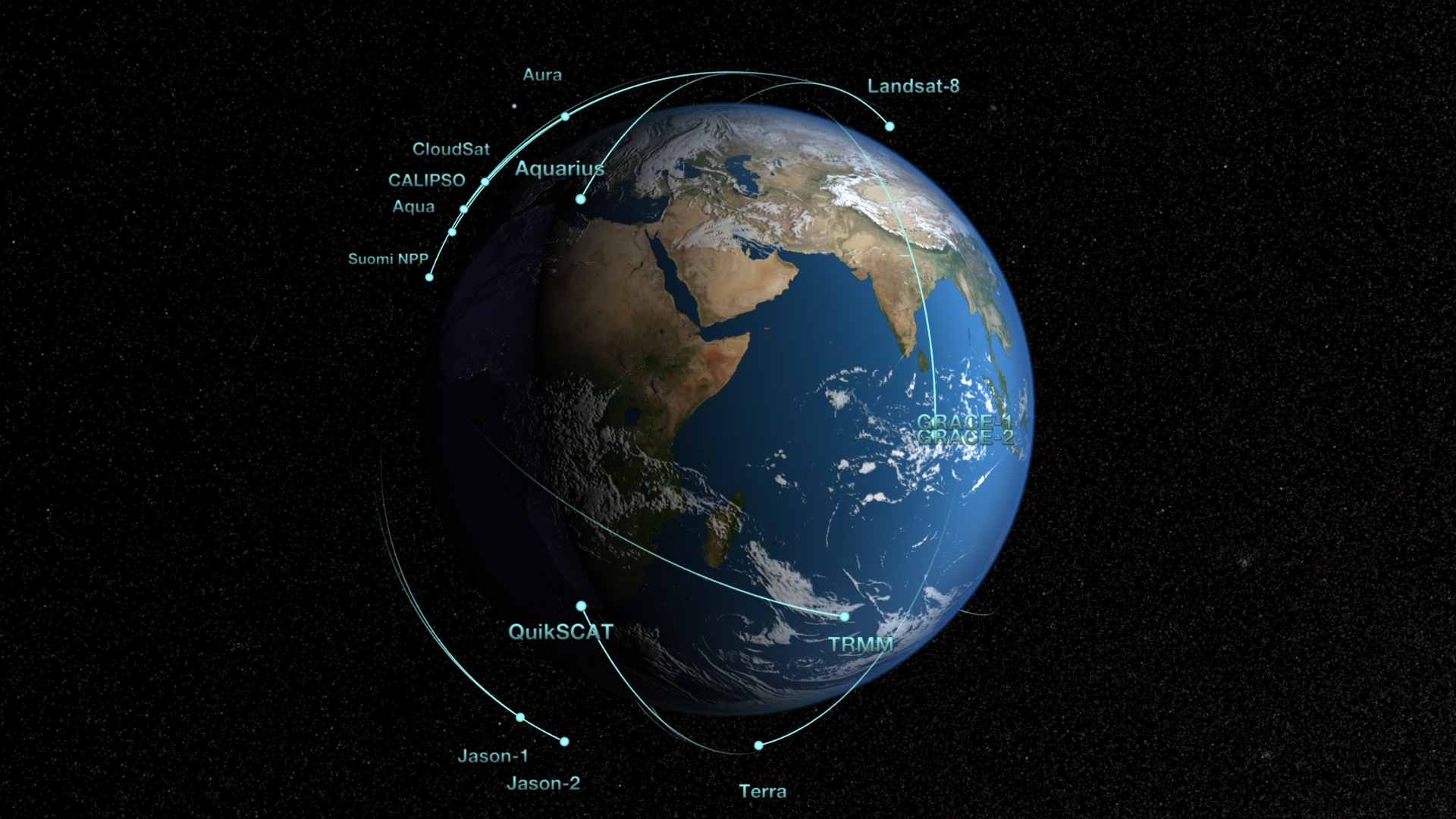Around The World
There’s a dance occurring hundreds of miles above Earth right now. It’s the result of choreographed movements made by NASA’s fleet of Earth-observing satellites. A total of 16 satellites keep tabs on the pulse of the planet, collecting data on everything from rainfall and clouds to sea surface height and ocean salinity. Four of these satellites travel as a group, each spaced just minutes apart along a route that loops around the poles. The rest fly solo or in tandem, crossing over most of the planet as often as twice every 24 hours. Collectively, their orbits allow for simultaneous observations of Earth’s environment from multiple perspectives. Watch the video to see NASA’s Earth-observing fleet in motion.

See how NASA’s Earth-observing satellites circle the planet.
This visualization shows the orbits of NASA's Earth-observing satellites.

NASA's GPM satellite, planned for launch in early 2014, will allow for worldwide observations of rain and snow.

NASA's SMAP satellite, planned for launch in late 2014, will collect global measurements of soil moisture.

NASA's Orbiting Carbon Observatory-2 satellite, planned for launch in summer 2014, will study atmospheric carbon dioxide.
Credits
Please give credit for this item to:
NASA's Goddard Space Flight Center
-
Animators
- Greg Shirah (NASA/GSFC)
- Ernie Wright (USRA)
- Alex Kekesi (Global Science and Technology, Inc.)
-
Producer
- Matthew R. Radcliff (USRA)
-
Writer
- Kathryn Hansen (Wyle Information Systems)
Release date
This page was originally published on Tuesday, November 12, 2013.
This page was last updated on Wednesday, May 3, 2023 at 1:51 PM EDT.
